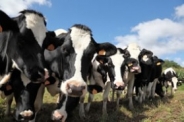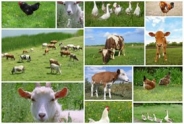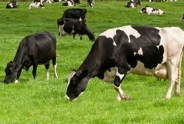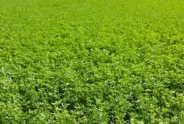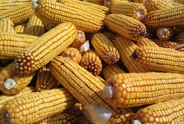Soil
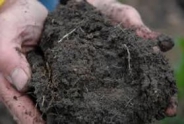 Effectively managing the soils of western New York for long-term productivity and sustainability is the foundation for crop production in New York's bread basket. This page contains resources and information to help farmers manage their soils and the nutrients used to grow their crops.
Effectively managing the soils of western New York for long-term productivity and sustainability is the foundation for crop production in New York's bread basket. This page contains resources and information to help farmers manage their soils and the nutrients used to grow their crops.A wide range of soils are farmed in western New York. Heavy clays sit on limestone bedrock along the Niagara Escarpment in Niagara and Orleans counties. Southern Wyoming, Livingston, Yates, and Seneca counties have acidic glacial loams. Highly productive loam soils are alongside heavy clays and gravelly sands, throughout the region and sometimes even in the same field. Muck soils naturally contain high levels of organic matter, while mineral soils vary greatly in their organic matter content depending on management history. Practices that increase soil health and productivity such reduced tillage, cover cropping, tile drainage, and diverse crop rotations continue to be adopted by western New York farmers.
Western New York farmers have been very proactive by adopting practices such as manure injection, nutrient management planning, split fertilizer applications, conservation tillage, and precision nutrient management in order to protect the natural resources they live near while increasing their productivity. While many farms make use of manure which contains many nutrients, farmers also typically apply nitrogen, phosphorous, potassium, and sulfur fertilizers along with lime to their fields. These fertilizers are placed with the crop seed as a "pop-up", 2 inches to the side and below the seed as a "starter", deep banded with tillage equipment, broadcasted on the soil surface, and occasionally applied as a foliar fertilizer. On-farm research by the NWNY Team continues to help farmers fine-tune their fertilizer applications to their crop rotations and tillage systems.
SOIL CATEGORIES
Dung Beetles in Pastures
Last Modified: June 15, 2020
Reducing the Risk of Compaction When Grazing Cover Crops
Nancy Glazier, Small Farms & Livestock Specialist
Northwest New York Dairy, Livestock & Field Crops
Last Modified: October 31, 2019

The benefits of cover crops have been known for many
years; one is remediating compaction.
Crop Alert
Mike Stanyard, Field Crops & IPM Specialist
Northwest New York Dairy, Livestock & Field Crops
Last Modified: July 27, 2018

Timely observations, information, and control strategies for managing pests, fertility, and current conditions on northwestern NY farms.
Forage Congress - Presentations
Nancy Glazier, Small Farms & Livestock Specialist
Northwest New York Dairy, Livestock & Field Crops
Last Modified: March 14, 2017

New to the NWNY Team's lineup this winter was Forage Congress at the Genesee River Restaurant and Reception Center in Mount Morris, NY.
This event covered timely topics recommended by the region's producers. The morning's session began with an overview of the cropping plan from the ground up, economics of high fiber digestibility, and new alfalfa varieties with quality grasses. The afternoon covered double cropping with winter triticale and options for properly storing silages.
Entry Point Precision Ag Technology: Benefits & Costs for Decision Making
John Hanchar, Farm Business Management Specialist
Northwest New York Dairy, Livestock & Field Crops
Last Modified: March 15, 2016

Two benefits attributed to auto steer mentioned frequently by producers and their advisors are reduced stress and reduced fatigue. Combine these benefits with expected favorable economic and financial impacts, and auto steer has the potential to be a beneficial change in practice for farmers, one that farmers will likely want to evaluate for their business.
Manure Injection vs. Surface Application
John Hanchar, Farm Business Management Specialist
Northwest New York Dairy, Livestock & Field Crops
Last Modified: September 23, 2015

Owners of dairy farm businesses face numerous challenges as they manage manure to meet financial, environmental, and other farm business objectives; trade-offs and conflicting objectives describe the situation. What is the expected change in profit associated with the change to manure injection from surface applicatin followed by incorporation?
Crop Cam
Mike Stanyard, Field Crops & IPM Specialist
Northwest New York Dairy, Livestock & Field Crops
Last Modified: September 9, 2015

Tune in as the NWNY Teams' Extension agronomists put on their GoPro cameras and head to the field.
Crop Cam 9-01-15 White Mold in Soybeans, Mike Stanyard in Ontario County.
Crop Cam 6-17-15 Scouting Soybean Aphids Mike Stanyard in Ontario County.
Crop Cam 6-05-15 Scouting Black Cutworm in Field Corn Mike Stanyard in Orleans County.
Crop Cam 5-29-15 Identifying Flowering Stage of Wheat Mike Stanyard in Monroe County.
Crop Cam 5-15-15 Alfalfa Weevil Larvae Scouting Mike Stanyard in Ontario County.
Crop Cam 5-14-15 Winter Triticale Forage Harvest Mike Stanyard in Wayne County.
Crop Cam 4-27-15:Comparing two winter malting barley fields. Bill Verbeten in Niagara County.
Crop Cam 4-6-15: Estimating wheat tiller counts per square yard. Mike Stanyard in Ontario County.
Crop Cam 3-20-15:Evaluating winter malting barley. Bill Verbeten in Niagara County.
Cover Crop Options in 2015
Mike Stanyard, Field Crops & IPM Specialist
Northwest New York Dairy, Livestock & Field Crops
Last Modified: August 7, 2015

Winter grain harvest should be just about wrapped up. That leaves a lot of open ground out there to plant some cover crops. We also ended up with quite a few prevented planting corn and soybean acres this spring. Some of that ground will go into winter small grains like wheat, rye and barley this fall. If you do not grow winter grains in your rotation, it is a good opportunity to get that ground covered up. There is also an opportunity to grow some more forage acres. This wet growing season has not been stellar for corn production. Crops like sorghum, forage oats and triticale can help fill in some of those forage losses. The past couple of years have shown us that the first half of August has been the optimal planting window for success of most cover crops.
Pop-Up and Starter Fertilizers in Corn and Soybeans
Bill Verbeten, Field Crops
Northwest New York Dairy, Livestock & Field Crops
Last Modified: March 4, 2015

Curious about applying pop-up or starter fertilizer to corn and soybeans? Check out this AgFocus article from May of 2013.
Proposed FAA Drone Rules Released
Bill Verbeten, Field Crops
Northwest New York Dairy, Livestock & Field Crops
Last Modified: February 24, 2015

On Sunday February 15th, 2015 the FAA released it's proposed rules for commercial unmanned aerial systems (UAS), commonly called drones, for public comment for 60 days. A summary can be found in the PDF below.
FAQs about Farm Drones
Bill Verbeten, Field Crops
Northwest New York Dairy, Livestock & Field Crops
Last Modified: December 22, 2014

Have a question about using an unmanned aerial system (UAS) on your farm? Not sure what is and isn't legal for drone use on your land? Check out this PDF for more information.
Safely Handling & Storage of Anhydrous Ammonia
Bill Verbeten, Field Crops
Northwest New York Dairy, Livestock & Field Crops
Last Modified: September 11, 2014

Thinking about using anhydrous ammonia? Be sure to download and read this safety fact sheet first before buying, handling, storing, or applying this fertilizer.
Planting Winter Triticale, Malting Barley, Wheat, & Rye
Bill Verbeten, Field Crops
Northwest New York Dairy, Livestock & Field Crops
Last Modified: August 21, 2014

As corn silage, soybeans, and corn grain come off during September and October many winter small grains will be planted in northwestern NY. This article reviews the similarities and differences for current planting recommendations of winter triticale, malting barley, wheat, and rye.
New Technology for Corn Nitrogen Needs
Bill Verbeten, Field Crops
Northwest New York Dairy, Livestock & Field Crops
Last Modified: June 20, 2014

Farmers and agronomists are constantly looking for better tools to improve crop production, and corn nitrogen is no exception. In an effort to account for the spatial variability within every field and the temporal variability of nitrogen due to weather farmers are beginning to use two new tools, GreenSeeker and Adapt-N, on a small scale in northwestern NY. While these tools have great potential to improve corn nitrogen management it is important to understand what they require to work well and the situations where their use may not be warranted until more experience is gained with them. Download the PDF for the full article that appeared in the June 2014 Ag Focus Newsletter.
Soil Tests for Corn Nitrogen Needs
Bill Verbeten, Field Crops
Northwest New York Dairy, Livestock & Field Crops
Last Modified: June 20, 2014

With extreme weather in 2012 and 2013 many farmers and consultants are scratching their heads trying figure out what in the world to do for applying nitrogen for the 2014 corn crop. While soil testing in the fall is standard procedure for other nutrients, normal soil sampling and testing does not document the nitrogen available to corn. In dry years some nitrogen can carryover in the soil from fall to spring, but wet years have high levels of nitrogen loss. Nitrogen from manure and plowing down haylage are not available as quickly as nitrogen fertilizer. Normally a corn crop does not need any nitrogen beyond a small amount of starter in the first year plowing down a haylage field. Dairies can often meet their nitrogen needs with manure. However many corn fields after haylage or with lots of manure needed side-dress nitrogen in 2013 due to excessively high rainfall. Because of all these reasons the soil tests for nitrogen usually have different procedures than normal soil testing. Depending on the growing season some soil tests may be more useful than others, and other tools may be needed in addition to or in place of soil testing. Download this PDF for the full article that appeared in the May 2014 Ag Focus Newsletter.
Variable Rate Fertility Management
Bill Verbeten, Field Crops
Northwest New York Dairy, Livestock & Field Crops
Last Modified: April 24, 2014

An expanded version of the February 2014 Ag Focus Article, Variable Rate Fertility Management.
Adapt N Training Resources
Bill Verbeten, Field Crops
Northwest New York Dairy, Livestock & Field Crops
Last Modified: April 15, 2014

Interested in the Adapt N tool? Check out the videos, PDFs, and manual below.
Cover Crop InterSeeder
Bill Verbeten, Field Crops
Northwest New York Dairy, Livestock & Field Crops
Last Modified: February 17, 2014

Want to plant a cover crop into standing corn or soybeans, apply a herbicide, and sidedress nitrogen all in one pass? Check out the cover crop InterSeeder developed at Penn State in this PDF. For additional information go to InterSeeder website.
Illinois Soil Nitrogen Test (ISNT)
Bill Verbeten, Field Crops
Northwest New York Dairy, Livestock & Field Crops
Last Modified: February 14, 2014

Curious about what the ISNT soil test is and how to use it? Download this Cornell Agronomy Fact Sheet describing the Illinois Soil Nitrogen Test. More Agronomy Fact Sheets are available at the Cornell Nutrient Management Spear Program website.
Soil Sampling for Field Crops
Bill Verbeten, Field Crops
Northwest New York Dairy, Livestock & Field Crops
Last Modified: February 13, 2014

Not sure how to sample your soil? Download this Cornell Agronomy Fact Sheet. More Agronomy Fact Sheets are available at the Cornell Nutrient Management Spear Program website.
Mapping Management Zones with Soil Conductivity
Bill Verbeten, Field Crops
Northwest New York Dairy, Livestock & Field Crops
Last Modified: February 4, 2014

Interested in creating soil management zones with soil conductivity on your farm? Download this PDF.
Getting the Most Out of Your Manure Presentation
Bill Verbeten, Field Crops
Northwest New York Dairy, Livestock & Field Crops
Last Modified: January 23, 2014

There are many practical, cost-effective manure management practices can be adopted on farms of all sizes.
Abnormal Corn Ears Poster
Last Modified: January 21, 2014

“Check out this poster describing the cause of abnormal corn ears.”
Malting Barley Nutrient Management
Bill Verbeten, Field Crops
Northwest New York Dairy, Livestock & Field Crops
Last Modified: January 21, 2014

Apps for Ag
Nancy Glazier, Small Farms & Livestock Specialist
Northwest New York Dairy, Livestock & Field Crops
Last Modified: December 20, 2013
List of some apps for smartphone users.
Veris Soil Electrical Conductivity, pH, & OM Videos
Bill Verbeten, Field Crops
Northwest New York Dairy, Livestock & Field Crops
Last Modified: December 17, 2013

2014 NRCS EQIP Sign-up
Bill Verbeten, Field Crops
Northwest New York Dairy, Livestock & Field Crops
Last Modified: November 4, 2013

For more information about 2014 EQIP applications download these PDFs.
Gypsum Bedding in Long-Term Manure Storage May Create Dangerous Conditions
Nancy Glazier, Small Farms & Livestock Specialist
Northwest New York Dairy, Livestock & Field Crops
Last Modified: October 17, 2013
A serious and potentially hazardous situation can occur when farms using gypsum as bedding agitate their long term manure storages.
Vertical Tillage Equipment
Bill Verbeten, Field Crops
Northwest New York Dairy, Livestock & Field Crops
Last Modified: October 3, 2013

Vertical tillage tools have become very popular in recent years. For more information click on the links for the following companies: AerWay, Great Plains, John Deere, Case IH, Rangeline, McFarlane, & Landoll.
Soil Inoculants
Bill Verbeten, Field Crops
Northwest New York Dairy, Livestock & Field Crops
Last Modified: June 3, 2013
Most farmers are familiar with the benefits of inoculating legumes with Rhizobia bacteria, but what about the many other micro-organisms that can be applied to crop seeds and the soil? Check out this PDF from the University of Georgia Cooperative Extension to find out more.
Steel in the Field
Bill Verbeten, Field Crops
Northwest New York Dairy, Livestock & Field Crops
Last Modified: April 30, 2013
Sixty years ago everyone had some "steel in their fields" to control weeds. However mechanical weed control has become a lost art in modern farming. Whether you're concerned about chemical weed resistance, an organic grower, or are just plain interested in "digging" a little more into the topic, this publication is for you.
Tillage Equipment Pocket ID Guide
Bill Verbeten, Field Crops
Northwest New York Dairy, Livestock & Field Crops
Last Modified: April 30, 2013
When it comes to tilling the soil there are dozens of terms to describe what hundreds of pieces of equipment do in the field to prepare the next crop. The NRCS has published this easy-to-use guide to help you figure out exactly what your iron does as you "take your tractor another round".
Building Soils for Better Crops: Sustainable Soil Management
Bill Verbeten, Field Crops
Northwest New York Dairy, Livestock & Field Crops
Last Modified: April 29, 2013
One of most comprehensive sources available discussing soil health and the practical management decisions to achieve it. Available for free as this PDF.
Managing the Soil to Manage the Pasture
Bill Verbeten, Field Crops
Northwest New York Dairy, Livestock & Field Crops
Last Modified: April 29, 2013
Feel like all of the fertilizer recommendations overlook pastures? Are your grasses and legumes not yielding like they should? Maybe you’ve heard a fertility myth (or two) that needs busting. If so this PDF of a presentation is what exactly your pasture ordered. Start digging deeper into your pasture fertility program by clicking here.
Reduced Tillage Fertilizer Management & Nitrogen Stabilizers
Bill Verbeten, Field Crops
Northwest New York Dairy, Livestock & Field Crops
Last Modified: April 29, 2013
Reducing tillage operations on your farm, but not sure how it will affect your fertility program? Not getting the most out of your nitrogen fertilizer? Be sure to check out this PDF copy of a presentation discussing both of these topics in detail.
Winter Rye Nitrogen Rate Trial, Yates County
Bill Verbeten, Field Crops
Northwest New York Dairy, Livestock & Field Crops
Last Modified: April 10, 2013
Some visual differences were noticeable on winter rye that had increasing rates of nitrogen fertilizer (Agrotain treated area) applied about 2 weeks earlier in western New York.
Winter Triticale Nitrogen Rate Study, Livingston County
Bill Verbeten, Field Crops
Northwest New York Dairy, Livestock & Field Crops
Last Modified: April 10, 2013
Nitrogen rate study on winter triticale about a week after nitrogen application (Agrotain treated urea). Few visual differences between fertilizer treatments were observable at this point in time at this location and many others in the study.
Winter Triticale Nitrogen Rate Study, Ontario County
Bill Verbeten, Field Crops
Northwest New York Dairy, Livestock & Field Crops
Last Modified: April 10, 2013
Observations from a nitrogen rate study (Agrotain treated area) with winter triticale in western New York a couple weeks after nitrogen application.
Winter Triticale Nitrogen Rate Study, Wyoming County
Bill Verbeten, Field Crops
Northwest New York Dairy, Livestock & Field Crops
Last Modified: April 10, 2013
Scouting a nitrogen rate trial in the middle of a rainstorm on winter triticale in western New York.
Winter Triticale Nitrogen Rate Trial, Genesee County
Bill Verbeten, Field Crops
Northwest New York Dairy, Livestock & Field Crops
Last Modified: April 10, 2013
Visual differences between rates of nitrogen fertilizer (Agrotain treated area) were seen about 2 weeks after application to winter triticale in western New York.
Nitrogen Applications for Winter Small Grains Silage
Bill Verbeten, Field Crops
Northwest New York Dairy, Livestock & Field Crops
Last Modified: February 1, 2013

Many western New York farmers planted winter triticale, winter rye, or winter wheat last fall in order to take a spring harvest to make up for the low haylage yields in 2012.
Managing Cover Crops Profitably
Bill Verbeten, Field Crops
Northwest New York Dairy, Livestock & Field Crops
Last Modified: June 1, 2012
Think of this book as a tool chest, not a cookbook. You won't find the one simple recipe to meet your farming goals. You will find the tools to select and manage the best cover crops for the unique needs of your farm. In this tool chest you will find helpful maps and charts, detailed narratives about individual cover crop species, chapters about specific aspects of cover cropping and extensive appendices that will lead you to even more information.
Cornell Soil Health Assessment Training Manual
Bill Verbeten, Field Crops
Northwest New York Dairy, Livestock & Field Crops
Last Modified: January 2, 2009
How healthy is your soil? Find out by downloading this PDF and submitting a sample or two to the soil health lab in Ithaca.
Upcoming Events
2026 Corn Congress
January 14, 2026
Henrietta, NY
Participant Registration for the 2026 Corn Congress NOW OPEN!
NOW OFFERING 1.5 DEC Recertification CREDITS
2026 Forage Congress
January 28, 2026
Nunda, NY
Register to attend 2026 Forage Congress!
2026 NWNY Dairy Day
February 5, 2026 : NWNY Dairy Day 2026
Perry, NY
Sponsorship and Registration OPEN!
The CCE NWNY Dairy, Livestock and Field Crops team will be holding it's 4th Annual "Dairy Day" on February 5, 2026! We will be bringing the latest in dairy research and hot topics to you with this in-person, 1-day conference.
Announcements
The NWNY Team is Hiring!
The NWNY Dairy, Livestock and Field Crops Team is currently looking for an Area Dairy Management Specialist as well as a Small Farms and Livestock Specialist:The full position descriptions and instructions on how to apply are available here:
Area Dairy Management Specialist: https://academicjobsonline.org/ajo/jobs/31178
Small Farms and Livestock Specialist: https://academicjobsonline.org/ajo/jobs/30979
Follow us on Instagram
See photos and reels of our most recent events and programs!Join us on Facebook!
Follow us on Facebook to get up to date posts about events, workshops and everything NWNY!Add us on LinkedIn!
Connect with us on LinkedIn to get more information about upcoming workshops and programs!

